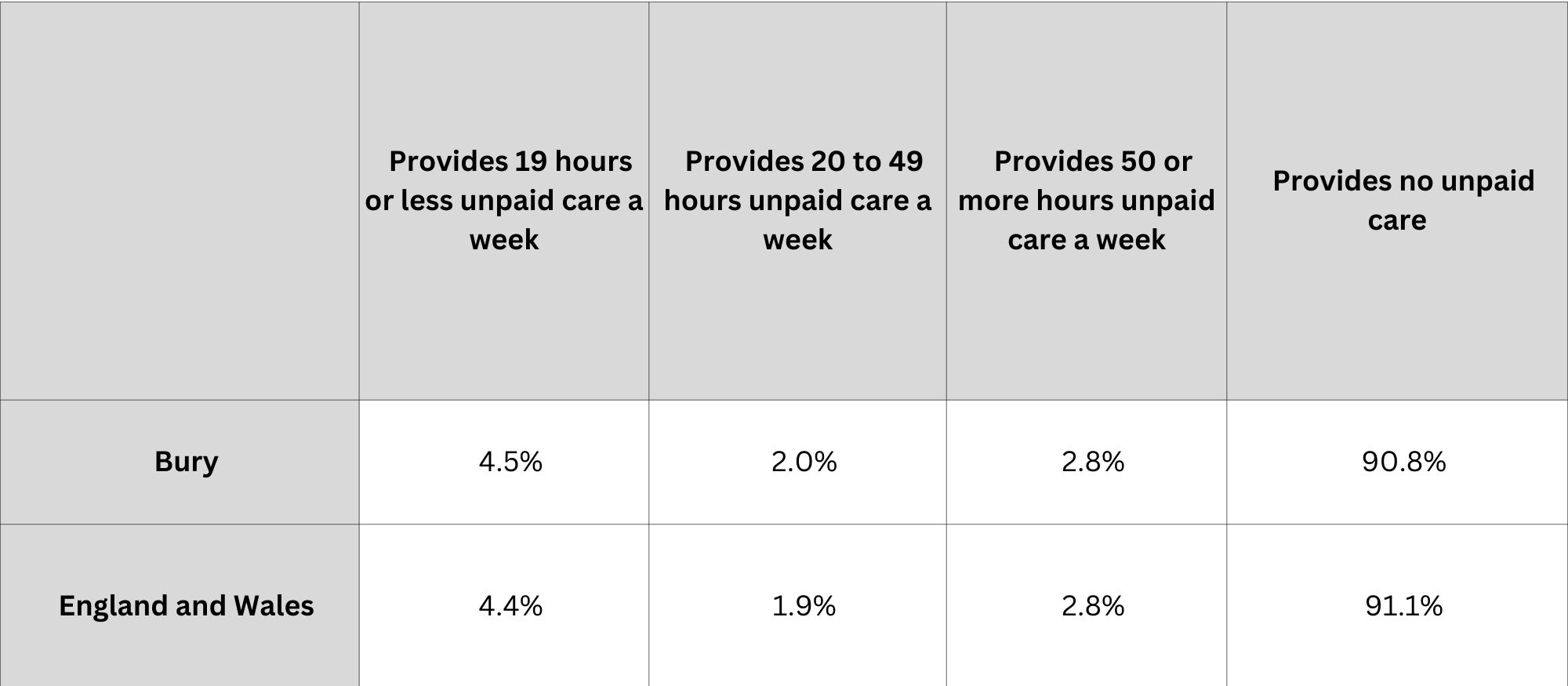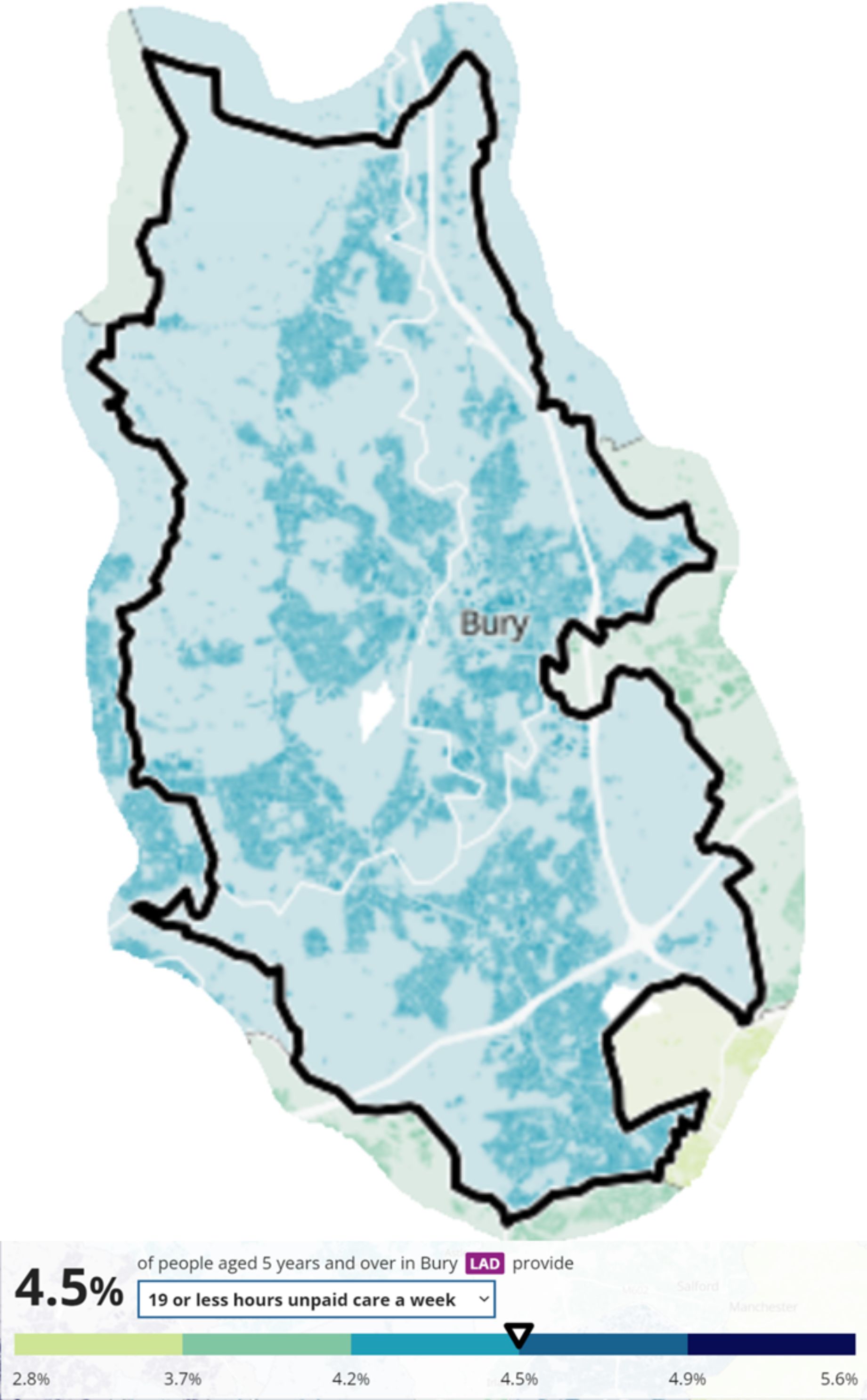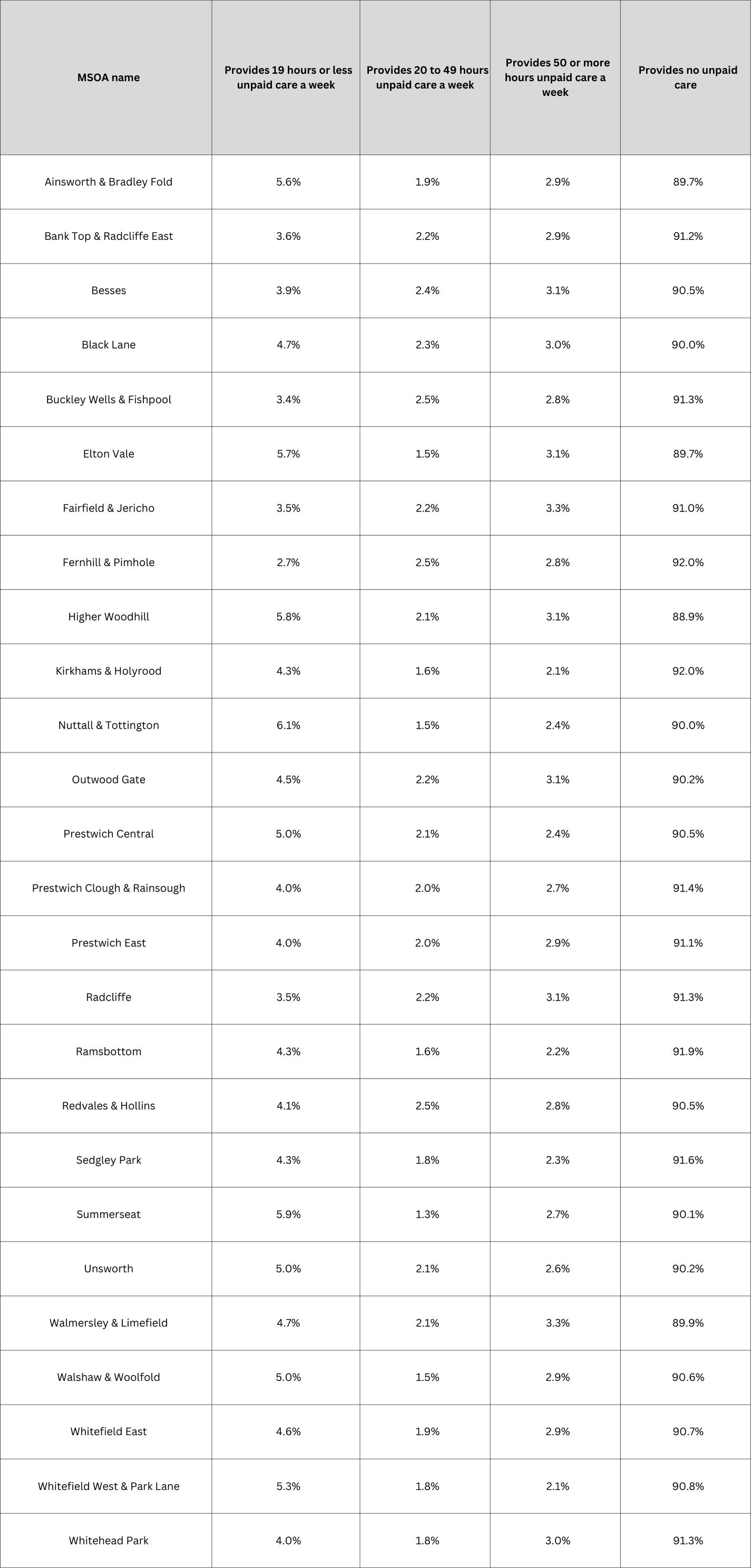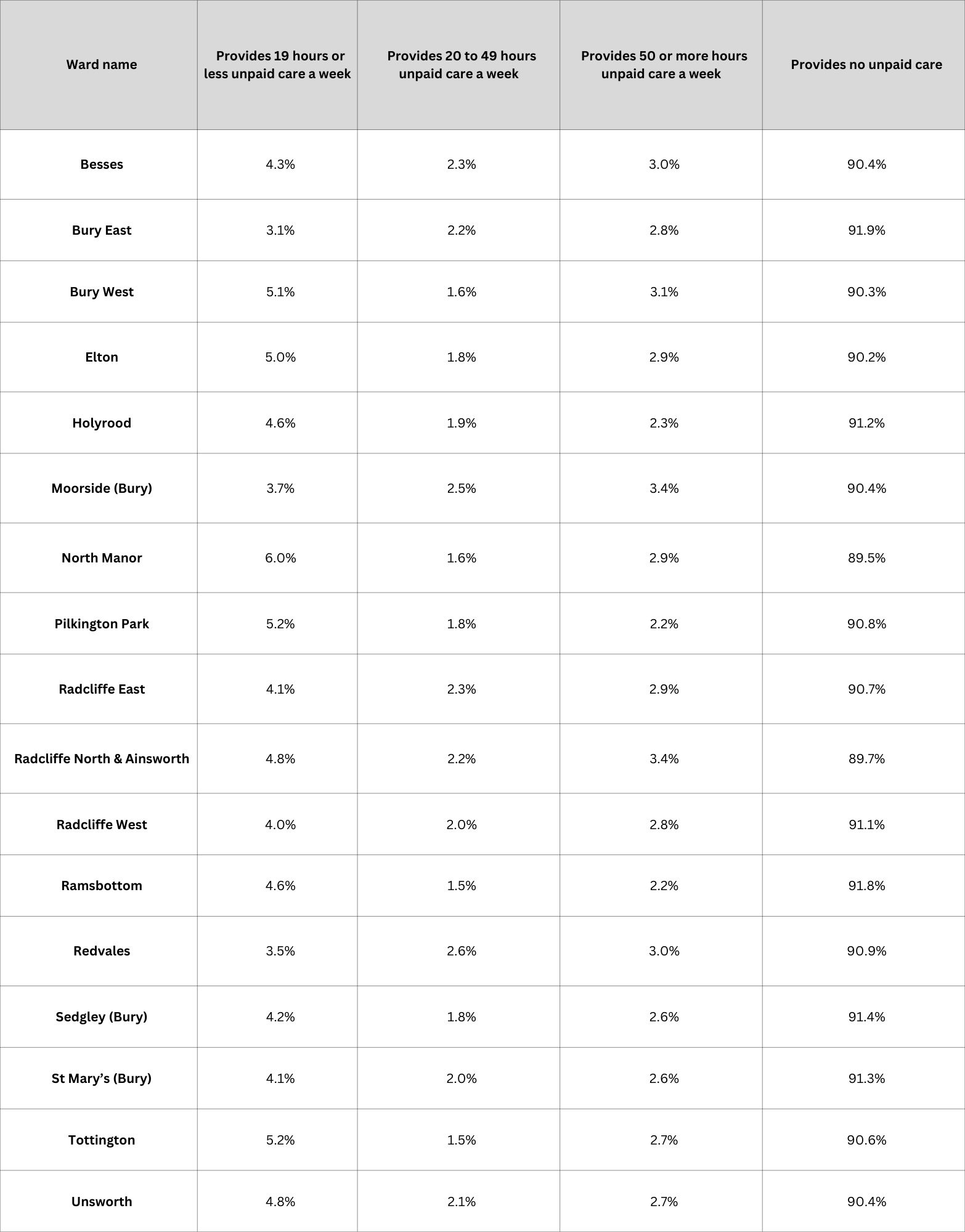Provision of unpaid care
Provision of unpaid care
Provision of unpaid care
This is the number of usual residents aged 5 years and over who provide unpaid care, and how many hours they provide in a typical week.
Census 2021 asked "Do you look after, or give any help or support to, anyone because they have long-term physical or mental health conditions or illnesses, or problems related to old age?". People were asked to exclude anything they did as part of their paid employment. The wording of the question differs from the 2011 Census question, which began "Do you look after, or give any help or support to family members, friends, neighbours or others".
Census 2021 was undertaken during the coronavirus (COVID-19) pandemic, which may also have influenced how people perceived and undertook their provision of unpaid care and therefore may have affected how people chose to respond.
The graph below shows the number of hours of unpaid care provided per week, usual residents aged 5 years and over, age-standardised proportions, 2011 and 2021, England and Wales.
-
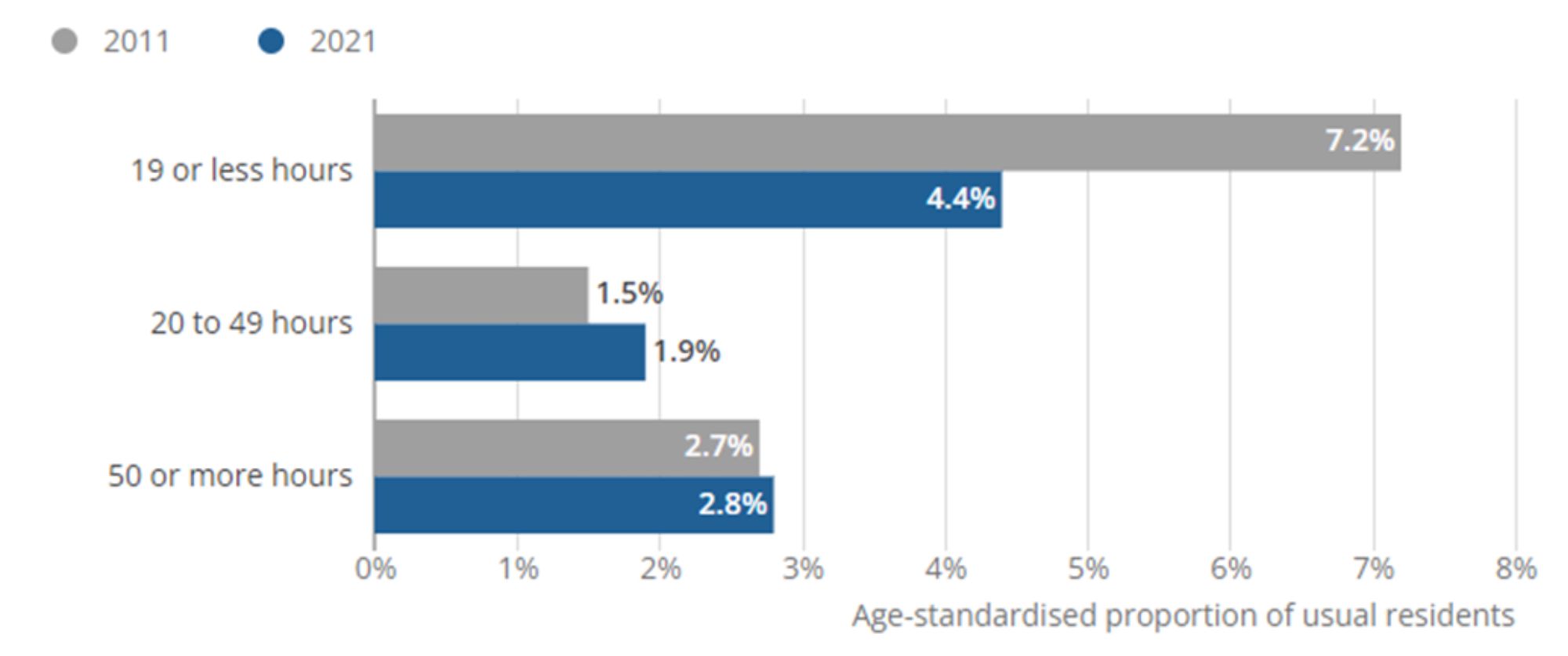 Age-standardised proportions (ASPs) are used as they allow for comparison between populations over time and across geographies, as they account for differences in the population size and age structure.
Age-standardised proportions (ASPs) are used as they allow for comparison between populations over time and across geographies, as they account for differences in the population size and age structure.
The figures for Bury are very similar to those for England and Wales.
The table below shows provision of unpaid care by MSOA in Bury.
Higher Woodhill had the highest number of residents providing any amount of unpaid care at 11%, with Fernhill & Pimhole and Kirkhams & Holyrood the lowest at 8%.
The table below shows provision of unpaid care by ward.
North Manor had the highest number of residents providing any amount of unpaid care at 10.5%, with Bury East the lowest at 8.1%.
